Division Street Documents Street Life
BY JOEY PEROTTI
In 2016 San Francisco hosted Super Bowl 50. Then Mayor Ed Lee ordered the San Francisco Police Department to move those living on the streets from places they might be seen by tourists. Many were told to go to 13th Street — Division Street — a place of perpetual halfdarkness roofed by the Central Freeway.
“So, I went down to 13th Street and there must have been three to four hundred tents, and a like number of journalists,” said Robert Gumpert, photographer and author of the recently published, Division Street. “So, I started photographing and talking to people.”
Originally from Los Angeles,
Gumpert spent time in New York, Chicago and Bangkok before he and his wife, Sandy Cate, moved to Potrero Hill in 1983. He settled into working as a social documentarían, photographing the world with an eye to the social and political aspects of people, places and things.

“At some point I stopped working for the [news]papers because I couldn’t make a living at it. I got offered a contract to do photos for the Department of Industrial Relations for the state,” capturing images to decorate offices, used as part of training modules and to illustrate publications. “Then the governor changed and with it the commitment to taking pictures of workers changed.”
Delancey Street Program Population Down During the Pandemic
BY REBEKAH MOAN
Criminal sentencing policies swing one way and then the other, but demand for entry into the Delancey Street residential training center for drug abusers, ex-convicts, and the unhoused remains the same, according to Dr. Mimi Silbert, the program’s president and chief executive office.
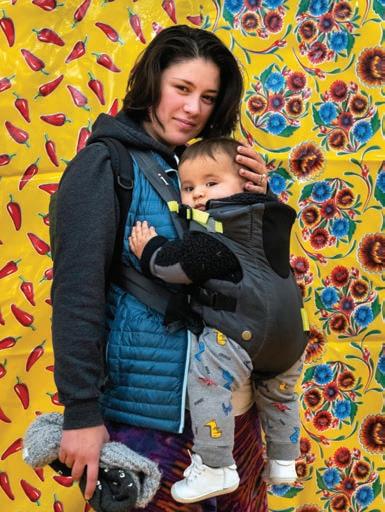
Started in 1971 by Silbert and John Maher, the San Francisco center is named after a street on New York’s Lower East Side where Eastern Europeans settled at the turn of the 20th century. The facility, located at 600 The Embarcadero, consists of a 400,000-square-foot, four-story
complex with 177 dorm rooms, pool, movie theater, and restaurant.
Delancey Street receives about 30 letters a day from imprisoned people who have been paroled but feel they’re not ready to be released without additional support and would like to join Delancey Street. During their two-year commitment residents learn vocational skills through the nonprofit’s various businesses: a restaurant, moving company, catering services, and Christmas tree lot during the winter. They also learn social skills as they’re required to engage with other residents.
In 2004 he contracted with Labor Management Partnership, a collaboration between Kaiser Permanente, the Coalition of Kaiser Permanente Unions and the Alliance of Health Care Unions that works to improve labor-management relations. He stayed for ten years before it became “pretty PR-ish, which I’m not good at, in the
sense that it makes me cringe.”
Simultaneously, Gumpert embarked upon self-funded projects. Starting in 1994 he spent five years following beat cops, homicide detectives, and a public defender, culminating in exhibits at the Photographer’s Gallery in London, Yerba
Smuin Center for Dance Invites Potrero Hill to Move it
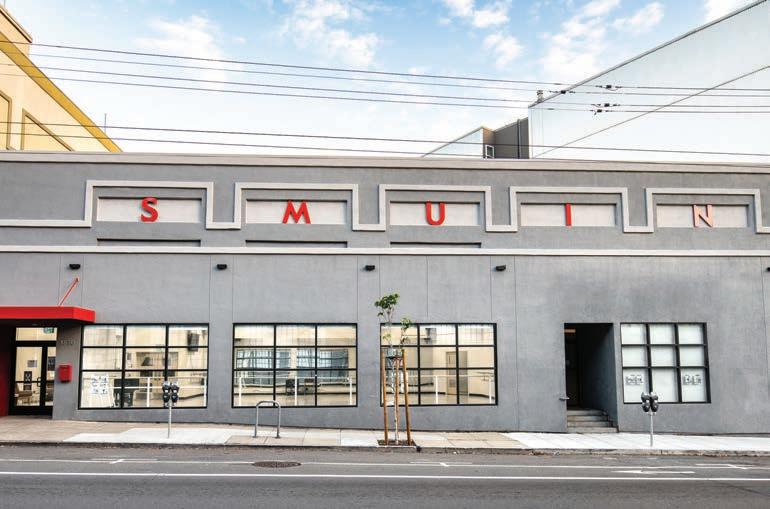
 BY VIVIEN WANG
BY VIVIEN WANG
Shortly before the start of the pandemic, Smuin Contemporary Ballet and the Smuin Center for Dance relocated to 1830 17th Street, between Rhode Island and De Haro. The Ballet was founded in 1994 by Michael Smuin, former choreographer and co-artistic director of San Francisco Ballet; the Smuin Center for Dance was established two years ago as its adult dance school.
Company dancer, John Speed Orr—
who also has a real estate license—saw the potential in the oddly shaped lot, which formerly housed the Metronome Ballroom, and helped secure it. Several weeks after Smuin moved in the shelterin-place order was imposed.
“We quickly pivoted to an online program reaching directly into people’s homes to stay connected and moving throughout the pandemic,” said Amy London, Smuin’s Director of Education.

INSIDE Publisher’s View: Affordable Decarbonization Pg. 2 Vote: The View Provides a Few Thoughts Pg. 2 Hill Street: A Chip Off the Old Block Pg. 3 Chinese Medicine Taught in
Hill Pg. 4 Pelton Cottages: A Piece of Dogpatch History Pg. 4 Chatz Bids Farewell Pg. 7
FREE Serving the Potrero Hill, Dogpatch, Mission Bay and SOMA Neighborhoods Since 1970
JUNE 2022
Potrero
Smuin Center for Dance on 17th Street.
PHOTO: Maximillian Tortoriello Photography
Photographs from Division Street include left, San Francisco Giants’ fans cross the Lefty O’Doul Bridge on the way to the ballpark. 10 October 2016. Center: Tatianna Flores, 27, with Elias Corruthers, seven months, three weeks. Right: Marcus Naylor, 42, with Kendra Naylor, 44, Maleeq, eight, and Maliki, five, who have been without a home for about three years. PHOTOS © Robert Gumpert
DELANCEY STREET continues on page 10 SMUIN continues on page 9
DIVISION STREET continues on page 8
PUBLISHER’S VIEW
AFFORDABLE DECARBONIZATION
California faces a conundrum. We want to radically reduce greenhouse gas emissions (GHG), principally by replacing fossil fuels used in transportation and buildings with electricity generated by renewable energy. Yet, the state’s electricity prices are among the country’s highest and still rising.
Pacific Gas and Electric (PG&E) customers pay roughly 80 percent more per kilowatt-hour (kWh) than the national average, Southern California Edison (SCE) charges 45 percent more, while San Diego Gas and Electric’s clients shell-out double the coast-to-coast norm. Even low-income Californians whose rates are subsidized pay more than the typical American.
To achieve its laudable GHG reduction goals and convince the large numbers of people necessary to make a difference to switch, electricity needs to be cost competitive with – if not cheaper than – diesel, gasoline and natural gas.
Electricity rates are high in part because they reflect years of previously
Didn’t we just vote for something? Regardless, it’s time to do so again, the June 7, 2022 “Consolidated Statewide Direct Primary Election.” The View provides the following electoral thoughts for your consideration.


made expensive decisions, related to wildfire costs, infrastructure investment, and other elements. But new demand created by future conversion from fossil fuels wasn’t considered in past electricity resource and grid planning and should not have to carry the burden of these historical choices. None of the load added to decarbonize the grid should incur legacy costs for past generation investments nor for previous distribution expenditures.
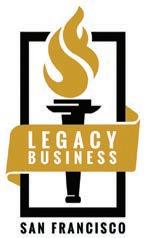
One way to untangle this knot is to offer customers who trade their natural gas-, fossil methane-, or propane-powered water heating and space heating, ventilation and air conditioning (HVAC) or other appliances for electric models a discounted rate on the incremental electricity they consume. The rate could also be offered to Californians who retire their gasoline- or diesel-powered automobiles in favor of an electric vehicle (EV).
United States Representative, District 11: Nancy Pelosi. Our hometown congressional hero is awesome, and remains if not at, close to, political peak power. That said, please Nancy, retire gracefully when you feel you’re slipping.
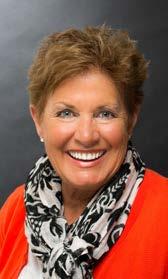
State Controller : Former District 10 Supervisor Malia Cohen is a pretty good politician. She does not, however, have a reputation for being an excellent number cruncher. Ron Galperin, who served as Controller for the City of Los Angeles does have such standing.
State Treasurer: A whiff of entitled corruption emanates from the direction of Fiona Ma, who otherwise should be a shoe-in for this office. Do yourself a favor and vote for Jack Guerrero, a Cudahy city council member, instead.
Insurance Commissioner: Marc Levine.
State Assembly District 17: It’s hard to find someone in the know who unreservedly loves Matt Haney. He’s smart and ambitious, but perhaps with a challenging personality. If you want to shake things up, consider Bill Shireman, a lifelong warrior for the environment.
City Attorney: David Chiu. A fine fellow. Not that you have a choice.
A Muni Reliability and Street Safety Bond: Is Muni an essential service? Is it well run? Do we believe that $400 mil-

PUBLISHER’S VIEW continues on page 9 JUNE 7TH $68 Subscription $132 Subscription-Benefactor Other contribution amount $ Please send my one-year subscription to: FULL NAME EMAIL ADDRESS STREET ADDRESS CITY STATE ZIP CODE Enclosed is my check. Please send, along with this form, to: The Potrero View, 1459 18th St., #214, S.F., CA 94107 I am sending my payment via PayPal to office@potreroview.net. I love the View and would be delighted to support it by being a subscriber. YES! www.potreroview.net/product/subscribe or complete the form below At 12 pages the View is just too short. $24,000 would enable us to get to 16 pages for an entire year. That’s on the order of a half-dozen new advertisers, 48 very generous readers donating $500 each, or 400 additional subscribers. To date we’ve raised just $1,200. Your money will make news! Four pages! Susan Olk Top Producer, CRS, CLHMS LIC# 00788097 | 415.279.8835 Susan.Olk@CorcoranGL.com www.susanolk.com ©2021 Corcoran Global Living. All rights reserved. Each franchise is independently owned and operated. Corcoran Global Living fully supports the principles of the Fair Housing Act and the Equal Opportunity Act. This is not intended as a solitication if you're working with another broker. Information is deemed reliable, but is not guaranteed. Susan Olk TOP PRODUCER INDIVIDUALS TOP 25% OF INDIVIDUALS IN 2021 "Many thanks to all my clients over the last 40+ years that have trusted me with the buying/selling of their home in SF. I am so grateful for all their support that has provided me with an amazing career opportunity." HONOR SOCIETY

lion in general obligation bonds will be spent wisely, with stellar procurement practices, resulting in a tangibly better system? This is one of those gun-heldto-an-adorable-dog’s head decisions. Of course, you don’t want to shoot the dog. But you really wish it’d been potty trained before it came into the house. Yes..?
B Building Inspection Commission : Like San Francisco’s legendary fog, the whiff of corruption regularly rolls into City Hall and its environs. Will the changing of deck chairs on the Building Inspection Commission titanic stop it from hitting an iceberg? Probably at least for a while, given the additional light that’ll be shined. Yes!
VOTE continues on next page
2 THE POTRERO VIEW June 2022
THIS MONTH’S CONTRIBUTORS Copyright 2022 by The Potrero View. All rights reserved. Any reproduction without written permission from the publishers is prohibited.
PUBLISHER Steven J. Moss ACCOUNTING MANAGER Catie Magee PRODUCTION MANAGER Helena Chiu
THE VIEW IS PRINTED ON RECYCLED NEWSPRINT WITH SOY-BASED INK.
Andrew Chou-Belden, Steven Fidel Herraiz, Rebekah Moan Steven J. Moss, Joey Perotti,
Lee Stuart, Vivien Wang
BY STEVEN J. MOSS Editorial and policy decisions are made by the staff. Published monthly. Address all correspondence to: THE POTRERO VIEW, 1459 18th Street, Number 214, San Francisco, CA 94107 • 415.643.9578 E-mail: editor@potreroview.net • production@potreroview.net (for advertising)
C Recall Timelines and Vacancy Appointments: Our fragmented society is catalyzing more recall elections, of governors, district attorneys, school board members. Is that democracy in action, or democracy run amuck? These bad boys are costly and can be used strategically to remove politicians from offices during low turnout special elections, not entirely democratic. However, it’s not clear that we’ve fully absorbed the lessons learned from the most recent bout of recalls, nor does it seem entirely fair that the mayoral appointee to replace a recalled officeholder would be prohibited from running for that seat. No
D Office of Victim and Witness Rights: Legal Services for Domestic Violence Victims. It’s reasonable to help crime victims navigate a complex legal and support system. Yes
E Behested Payments: See Proposition B, except this one would prohibit supervisors from asking contractors to donate to their favorite nonprofit. Yes
F Refuse Collection and Disposal : Again, B, focusing on the “Refuse Rate Board,” (i.e., garbage). Yes
G Public Health Emergency Leave :
This proposition would require employees with more than 100 employees worldwide to provide paid public health emergency leave, not to exceed 80 hours a year. It’s a nice idea but isn’t it government’s job to provide this type
of protection, through unemployment insurance and the like? And what if most of those employees are located outside San Francisco? No H Recall Measure Regarding Chesa Boudin : San Francisco’s criminal justice system is a work in progress. There are far too many unresolved home and automobile break-ins, as well as a continuing epidemic of adjacent public health issues, related to deadly drug abuse and erratic, sometimes dangerous, street behavior. Is this because we have an inept District Attorney, a poorly functioning police department, a “City family” that isn’t effective, or all of the above? New to elected office and management of a complex organization in general, Boudin’s performance thus far merits a “C.” Does it also merit being recalled? The View will leave that up to you. No recommendation
Hill Street a Chip off the Old Block
BY LEE STUART
The basalt blocks that make up 24th Street, between Rhode Island and De Haro, are a historic part of Potrero Hill, and San Francisco. The street is the Hill’s steepest, the City’s seventh sharpest. It was featured in two episodes of the 1970’s cop show, The Streets of San Francisco, staring a young Michael Douglas and Karl Malden.
After the long, wet, winter of 1849, Sn Francisco’s muddy hills were nearly impassable. The Gold Rush was drawing people to the Bay Area from throughout the world; roads needed serious work. San Franciscans experimented with various materials, searching for the best and most cost-efficient surfacing choice.

In 1851, wood planks were widely used as a street surface. By 1853 most roads had been planked at least once; wood didn’t hold up well over time. During the 1860s streets were paved with rounded river rocks of various sizes, with rubble between them. Most stones came from the American River near Folsom, brought downstream by steamers towing barges and scow schooners. The stones’ unevenness and random sizes were hard on horses’ hooves. When wet, steep cobblestone throughfares could be impossible for heavy loads pulled by livestock to traverse.
Alternative materials were tried, including wood blocks covered in tar to quiet the clopping of hooves and clanging of metal wheels. Macadam and asphalt were experimented with throughout San Francisco. By 1871 major cities like Paris and Vienna were
HANDY NUMBERS
widely using asphalt for roads, whose use was much quieter then cobbles. San Francisco’s experts, however, didn’t think tar would be strong enough to hold up over time, and were concerned about how slippery they’d be for horse drawn wagons.
By the end of the 1860s large basalt blocks, like the ones on 24th Street, were being used. The first chunks were brought as ballast on cargo ships from Europe. In 1873 San Francisco officially adopted large stone blocks for road surfacing. As demand increased, basalt was brought in from quarries in Napa, Sonoma, Solano and Marin counties. Some of the earliest stones were quarried just south of Petaluma.
The stones provided a more even surface for carriages and were laid at a slight angle on steep inclines to give horses better grip going uphill. Most roads were funded by adjacent residents and businesses, with cheaper materials sometimes used. Better subsidized streets used a concrete mixture to fill in cracks between the blocks. To cut costs, others were filled with tar, or simply set firmly in a sand foundation.
During the 1906 earthquake, inconsistently placed stones with large gaps were dislodged. Rebuilding roads became a priority. With a rise in automobile use, asphalt emerged as the material of choice as San Francisco rebuilt and grew. By 1923 almost all cobblestone streets in the City had been paved.
The stone block of 24th Street was
HILL STREET continues on page 9
District 10 Supervisor, 415.554.767 Shamann Walton shamann.walton@sfgov.org
Recology 415.330.1300


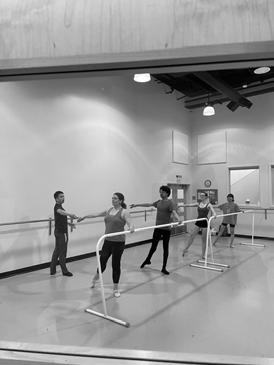
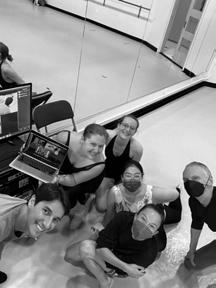
San Francisco Animal Care and Control 415.554.6364
San Francisco Fire Department (non-emergency) 415.558.3200

San Francisco Police Department 671-2300; (tip line), 415.822.8147



Bayview Station (non-emergency) SFPDBayviewStation@sfgov.org SFHOT/Homeless Outreach Team 311 or 415.734.4233
State Senator Scott Weiner 415.557.1300
3 June 2022 THE POTRERO VIEW
VOTE from previous page
DADSLOVE COFFEE MON-TUE7:00-2:00|WED-SUN7:00-6:00 Dad'sareeasytoplease.Bring yourdadtoFarley'sonFather's Dayforfreecupofcoffee.Itwill makehisday! Dance it out, Smuin style! Smuin Center for Dance o ers dance and fitness classes for adults in a wide variety of styles and levels. Whether in person or online, come move and be inspired with us in a fun and supportive atmosphere! Keep up with us on Instagram and Facebook @SmuinCenterForDance
Traditional Chinese Medicine Taught in Potrero Hill
 BY LEE STUART
BY LEE STUART
Eastern medicine – which focuses on treating the person rather than the symptoms – has been practiced for more than 3,000 years, with medical texts that date to the Han Dynasty in China (206 BCE to 220 CE). Western medicine principally attempts to understand linear sequences of adverse events culminating in a pathology that’s tangible and observable. In contrast, traditional Chinese medicine is interested in the balance between body and spirit. Medical writings focus on the circular movement of qi (chee) – air or vapor – as well as xuè (shui), blood. Improper interchange of one or both can cause an imbalance of yin and yang
Chinese migrants, coming to work on the transcontinental railroad or participate in the California Gold Rush, brought their traditional health practices to the United States in the 19th Century. Eastern medicine, however, was used exclusively within Chinese communities.
In the 1950s and 1960s the Chinese government codified Traditional Chinese medicine, which’d mostly been practiced by healers who verbally passed on their knowledge. The information was compiled into a systematic collection; a formal code.
Eastern medicine remained fairly unknown to western culture until The
New York Times reporter James Reston published ‘Now, About My Operation in Peking’ in 1971. On a trip through China accompanying Henry Kissinger, Reston suffered acute appendicitis. After his surgery he received acupuncture and was amazed by its positive effects. The article sparked an interest in alternative treatments, creating demand for training in the practices and applications of Eastern medicines.
Founded in 1980, one of the oldest schools of its kind, the American College of Traditional Chinese Medicine enrolled its first class in January of 1981. Later that year it opened its Acupuncture and Herbal Clinic, with a mission to provide affordable healthcare using Traditional Chinese Medicine (TCM). ACTCM now boasts two community clinics. In 1986 it became the first American college to award a Master of Science in TCM.
In 1987 the school moved to its current location at 455 Arkansas Street. In 1991, the U.S. Department of Education recognized ACTCM as a fully accredited university. In 2014, a Doctorate of Acupuncture and Chinese Medicine was added to the college’s offerings. In 2015 the Western Association of Schools and Colleges and University Commission approved a merger between ACTCM and the California Institute of Integral Studies, comprising Schools of Professional Psychology and Health, Consciousness and Transformation, and Undergraduate Studies.

ACTCM students are instructed in tuina (pinch and pull) and shiatsu (finger pressure) massage, as well as acupuncture by instructors licensed by California’s Acupuncture Board. Classes are available in uses of traditional Chinese herbs and remedies to treat various conditions and promote overall health and wellness. The school currently has roughly 200 students, paying about $16,500 in annual tuition. Class size averages 34 students, with 41 faculty members.
Pelton Cottages Evidence of Lived History in Dogpatch
BY STEVEN FIDEL HERRAIZ
Passersby may have noticed two rows of identical bungalows huddled together on Tennessee and Minnesota streets near 22nd. These are Pelton Cottages – 1002, 1004, 1008, 1010, 1012, and 1014 Tennessee Street – and their backyard neighbors; 903, 905, 907, 909, 911, 913, and 915 Minnesota Street. San Francisco was once home to 26 of these architectural gems. The 13 in Dogpatch are the largest concentration of those that remain.
The cottages were designed by John Cotter Pelton. Already a respected architect in the 1880’s, he wanted to make home ownership accessible to the working class. ‘Cheap Dwellings,’ his series of plans for a three – later four – room cottage was published between 1880 and 1883 in the San Francisco Evening Bulletin , a daily newspaper whose readership was comprised of the City’s immigrants and laborers. Many residents of Dogpatch – then ‘Dutchman’s Flat’ – fit that demographic, working in shipbuilding and other heavy industries at Potrero Point, today’s Pier 70.
The plans were predicated on a prospective new homeowner purchasing a 20-foot-wide lot, San Francisco’s minimum marketable plot size. A 20 percent rise in real wages between 1870 and 1890, along with newly available land for development brought about by street railroad expansion, made owning real estate in the City plausible for many who had previously been excluded. Single lots in Dogpatch were selling for $700 to $800 in 1880, or $21,866 in
today’s dollars.

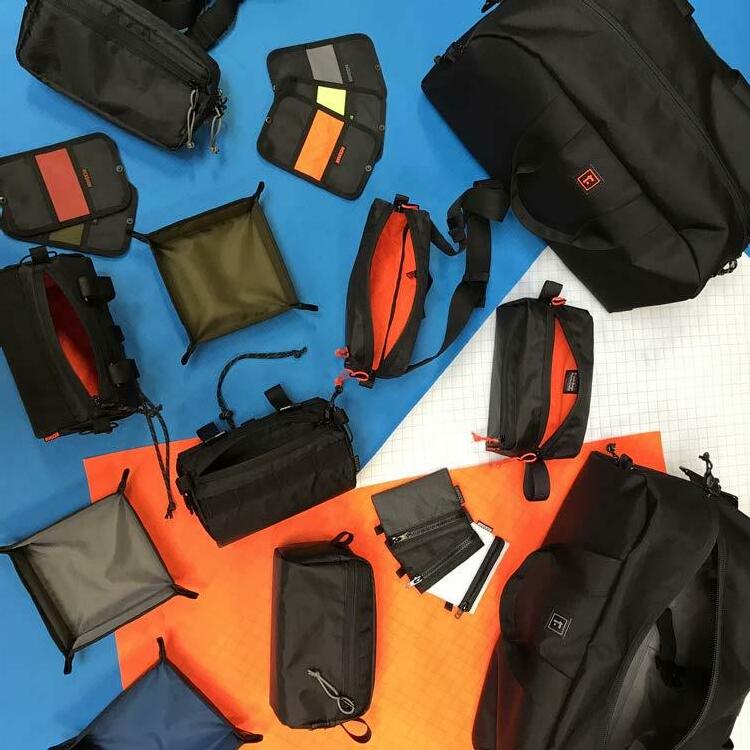
Pelton offered floor plans with clear specifications, a materials list, labor cost estimates, and a ‘how to’ section to enable anyone to build their own cottage. The designs were used by contactors and property owners throughout San Francisco, with many still standing today in the Mission, Haight, and Noe Valley.
According to architectural historian Christopher VerPlanck, who authored the proposal that garnered Dogpatch ‘Historic District’ status in 2002, “Pelton’s ‘Cheap Dwellings’ series represented the first and only known instance in which a California architect published free plans for workers’ dwellings in a daily newspaper.”
His initial series of plans, from 1880, were for a three-room cottage that included an indoor water closet, a hip roof – one that slopes upward from all sides of the building, with no vertical elements – and picket fence, with costing $585 for materials and labor, $15,990 today. Later that year he published a second series, for a four-room 782 square feet cottage, with materials/labor cost of $854.25, $23,350 today.
VerPlanck noted the more stylish nature of the second incarnation, “The plans depict scroll-sawn, Eastlake-style door and window surrounds and a heavy projecting cornice with brackets.”
Dogpatch’s remaining Pelton Cottages are of the four-room variety, constructed by contractor Rees Davis in 1887. The fortunate ones still wear their 140-year-old exterior finery. Some have

4 THE POTRERO VIEW June 2022
continues on page 10 , CA 94107 eet SrF 904 22nd St Y WEEK!R NEW SALE ITEMS EVE 11AM-5PM DAYS OPEN FRI FACTORY POP-UP Dear Readers Tell our local merchants you saw their ad in
HISTORY
Getting your home ready for sale doesn’t have to be difficult or expensive. There are several simple ways you can add value inexpensively:

• LIGHTEN AND BRIGHTEN—If it is time to repaint, consider lighter colors that will make your home brighter and feel more spacious.
• OUT WITH THE OLD—It is easy to accumulate clutter even after just a few years. Donating or discarding unneeded items can make a home feel more spacious—and make your future move easier.
• MAKE IT SHINE—There is nothing more important than ensuring your home is clean.
• DON’T FORGET SMALL THINGS WITH BIG IMPACTS—Simple steps like painting the garage floor or planting bright flowers near your home’s entrance are easy and inexpensive ways to make a home more welcoming.
If you’d like a free report on the value of your home, call Tim Johnson at 415-710-9000.
Tim Johnson 415.710.9000 tim@timjohnsonSF.com www.timjohnsonSF.com DRE 01476421
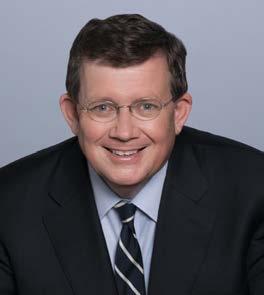
5 June 2022 THE POTRERO VIEW
Add Value
Your
Selling? Compass is a real estate broker licensed by the State of California and abides by Equal Housing Opportunity laws. License Number [license number to be inserted by region]. All material presented herein is intended for informational purposes only and is compiled from sources deemed reliable but has not been verified. Changes in price, condition, sale or withdrawal may be made without notice. No statement is made as to accuracy of any description. All measurements and square footage are approximate.
What are the Least Expensive Ways to
to
Home Before
COMMUNITY | JUNE


Now through 6/11 Saturday
Art: The Mail Art Club Exhibition
At the beginning of the pandemic
Creativity Explored artists mailed one another handmade postcards to stay connected, an experimental exchange of art and ideas initiated through a virtual class taught by Michael Napper. Over the past two years CE artists, teachers, staff and volunteers created and mailed hundreds of postcard-sized artworks.The Mail Art Club exhibition showcases dozens of original drawings, collaborative multimedia collages, and text-based work mailed and exchanged between participants of the ongoing class.Free. Creativity Explored, 3245 16th Street. For more information: https://bit.ly/3wzpzhO
Now through 7/9 Saturday
Photography: Matter in the Hothouse Chicago-based artist and winner of SF Camerawork’s 2020 Exhibition Award, Aimée Beaubien, presents Aimée Beaubien: Matter in the Hothouse, a psychedelic jungle of cut and woven photographs of plants, organic plant material, and other mixed media hung from the ceiling in strips and waves that visitors enter and walk around in, taking up the entire gallery. Wednesdays through Saturdays, 11 a.m. to 5 p.m. Free. Minnesota Street Project, 1275 Minnesota Street, Gallery 106. For more information and to make a reservation (encouraged): https://bit. ly/3LCfbtS
6/3 Friday
History: Hidden San Francisco Walking Tour
Hidden stories, surprises, and live performances abound in a 90-minute walking tour in the Yerba Buena neighborhood. Activism, music, and pirating are brought to life as actors portray the larger-than-life historical figures that gave this City its quirky, unique reputation. Brought to you by the Yerba Buena Community Benefit District. 2 to 3:30 p.m. Free. For meeting location and more info, please email info@ybcbd.org
6/7 Tuesday and 6/18 Saturday
Art: Robyn Horn and Iris Eichenberg Mobile MakeArt programs are back at the Potrero Branch Library, where the space will be transformed to welcome the works of artists Robyn Horn and Iris Eichenberg. Free. San Francisco
Public Library, Potrero Branch, 1616 20th Street. Tuesday 6/7, 4 to 6 p.m.; Saturday 6/18 1 to 3 p.m. For more information: https://bit.ly/3wJus6S

6/8 Wed

Community: Potrero Women’s Club



The 114-year-old Potrero Women’s Club will meet at the Potrero Branch Library, 1616 20th Street, at 1:30 p.m. Come learn about the club; be a part of histroy. For more information: 415.282.8209.
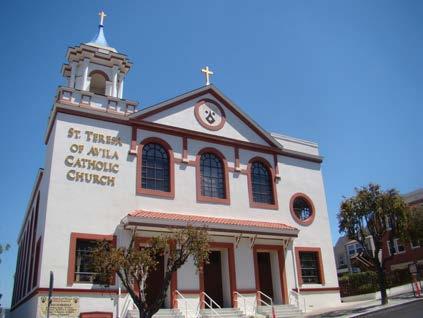
6/11 & 6/12 Saturday and Sunday
Art: The Box Shop Mural Festival
The Box Shop celebrates more than 80 colorful, beautiful mural installations covering the Box Shop’s exterior and inner yard, with artmaking, performances, mural tours, and more. Meet the muralists and Box Shop creators. Saturday 12 to 6 p.m. Sunday 12 to 4 p.m. Free. The Box Shop, 951 Hudson Avenue. For more information: https://bit.ly/3lvfTyv
6/12 Sunday
Film: Roman Holiday Roman Holiday (G, 118 minutes, 1953). 2 to 4:15 p.m. Free. Potrero Meeting Room, San Francisco Public Library, 1616 20th Street. For more information: https://bit.ly/3ltprdD
6/19
Sunday
Juneteenth: Festival
San Francisco Black Wallstreet hosts this year’s Juneteenth celebration to honor Black freedom, resilience and contributions to America., with food vendors, the Black Millionaire Marketplace, live performances, amusement park, and more. Gilman Park, 903 Gilman Avenue. For more information: https://bit.ly/3yQHfHn
6/22 Wednesday
Film: Cruella Cruella (PG-13, 134 minutes, 2021). 5 to 7:30 p.m. Free. Potrero Meeting Room, San Francisco Public Library, 1616 20th Street. For more information: https:// bit.ly/3MJdMn2
6/26 Sunday
Pride: Everyone Loves a Corgi March with your corgi. 10 a.m. Free. Spear and Market streets. For more information and to register: https://bit. ly/3wKOeie
6 THE POTRERO VIEW June 2022
Come be part of a Welcoming, Warm, Inclusive Faith Community CATHOLIC CHURCH Served by the Carmelites 1490 19th Street (at Connecticut Street) SUNDAY MASSES WEEKDAY MASSES 390 Missouri St San Francisco, CA 94107 415.285.5272 St Teresa of Avila’s Church is an EPA ENERGY STAR® certified building. We continue to livestream some weekend Masses. Link is on our website: MASKS STRONGLY RECOMMENDED June 7, 2022 City Hall, Room 48 (415) 554-4375 SFVote@sfgov.org sfelections.org Consolidated Statewide Direct Primary Election Vote by mail is now permanent. Per recent changes to state law, every registered voter will be mailed ballot. Any voter may still choose to vote in person. San Franciscans who miss the registration deadline still have the opportunity to vote In-person voting and conditional voter registration are available at: The City Hall Voting Center, open now through Election Day (City Hall Voting Center is closed on May 30, Memorial Day.) 588 polling places, open on Election Day, 7am-8pm. For locations, visit sfelections.org/myvotinglocation
Chatz Bids Potrero Hill a Fond Farewell
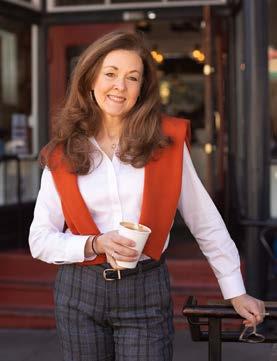
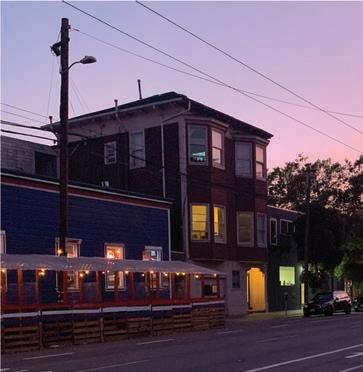

about San Francisco,” he said. “There’s a uniqueness to Potrero Hill, it’s an incredibly connected neighborhood.”
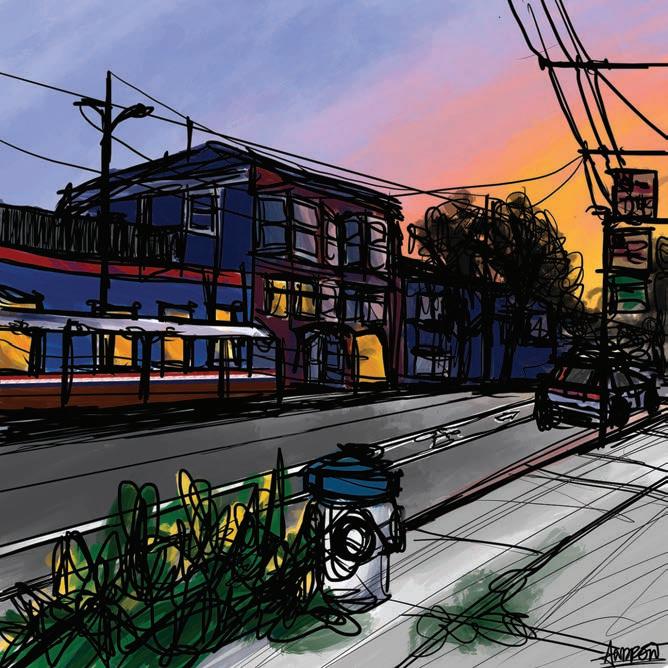

Masoud, who resides in South San Francisco, didn’t always vend coffee. He attended the University of California, Berkeley for eight years, earning a degree in chemical engineering. He worked as a professional engineer for decades, developing semi-conductors for a major company until 2002.
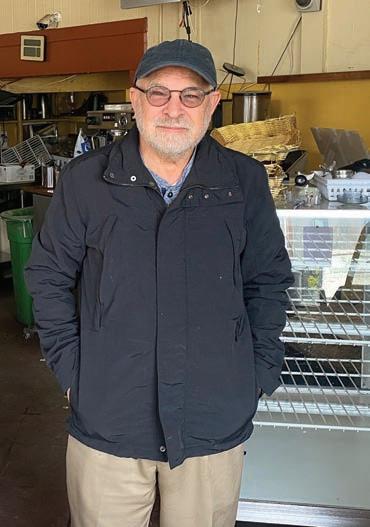
“Something at work was missing…a closeness with people,” Masoud stated.
The economy was going through a rough patch; he was asked to lay off his work group.
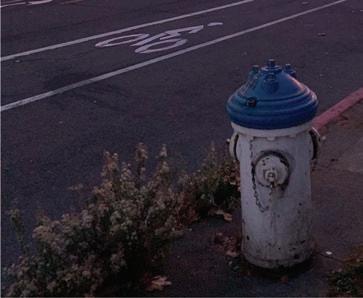
“It was around Christmas, people were talking about their kids going to college, and I had kids myself!”
after school. Masoud become close with a local principal who had gotten cancer, naming a coffee blend in her honor when she passed.
“The community is full of love and concern, relation and connection. From Arkansas to 18th and beyond.” He “knows everyone’s children and the names of their animals even.”
As a Hill merchant for 17 years, Masoud attended many birthdays, weddings, and funerals.
“Sometimes I go to the shop and get depressed. That’s life, you go through that, sometimes things turn out like that. The joy I got…Material and money
are not important,” Masoud explained.
“There is a different definition of value and status here…You are judged on your quality as an individual, and I am thankful to be exposed to that. If I had to go back, I would buy it again.”
BY LEE STUART
There’s been a coffee shop at 301 Arkansas Street for the last 22 years. Not anymore. Masoud, who owned and operated Chatz since 2005, reluctantly had to close the business in April. Challenges caused by the pandemic, combined with nearby construction that disrupted parking, created traffic congestion, and drew unregulated food vendors selling to site workers, eroding the café’s profits.
It’s a bittersweet time for Masoud, now in his late 60s, who reflected fondly on his eight-to-12-hour days spent joyfully managing the shop.
“There is something very special

The experience hit him hard. Masoud decided to change course and buy five-year-old Chat’s Roasting Company.
Considering himself a “successful problem solver”, he “approached coffee with an engineer’s mindset”, finding new and better ways to roast and brew. Until about three years ago, an eightounce cup of coffee was available for just one dollar at Chatz, priced at $4.50 at most other shops.
“I will miss my connection with the neighbors most,” he said. “Holding parcels for people”, if they weren’t home to receive them and “extra keys left there” in case a neighbor locked themselves out. He fondly remembered the students and teachers who would come by on their lunch break or stop in
South Slope Beauty!
Beautiful 3-Bedroom, 1.5-Bath home on the sunny southern slope! Three bedrooms on the upper level, spacious remodeled kitchen with adjoining family/TV/office space, wonderful western-facing garden, garage with ample storage. Just minutes north or south, and a quick bike ride to the Mission. Call
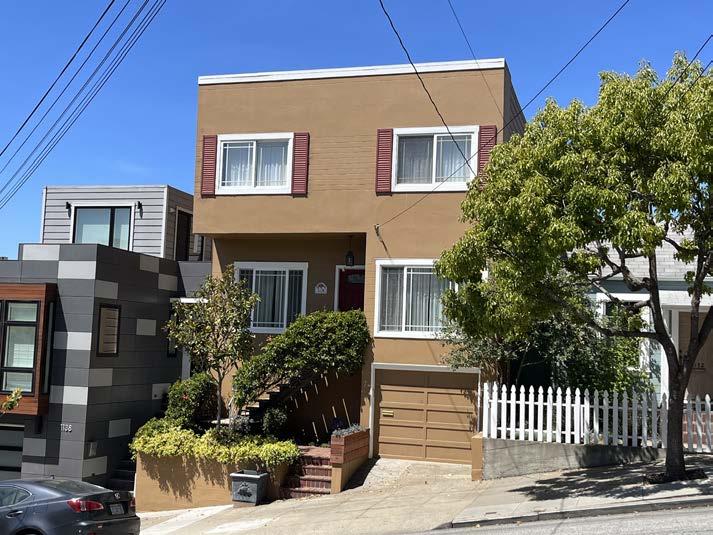
7 June 2022 THE POTRERO VIEW
“Dusk on 17th” is taken from a photograph of 17th Street captured September 2020. The leftmost restaurant depicted is Connecticut Yankee.
IMAGES: Andrew Chou-Belden
Masoud.
Potrero View Staff Bespoke owers designed to make any occasion special. 1411 18th Street, San Francisco, CA • www.bellandtrunk.com
Your Agent for Good. e-Pro, SRES | Lic. #01344377 melinda@melindalee.realtor 415.336.0754 | melindalee.realtor 4040 24th Street, San Francisco, CA 94114 ©2022 Corcoran Global Living. All rights reserved. Corcoran® and the Corcoran Logo are registered service marks owned by Corcoran Group LLC. Corcoran Global Living fully supports the principles of the Fair Housing Act and the Equal Opportunity Act. Each franchise is independently owned and operated.
PHOTO:
Melinda Lee
me for details!
1136 RHODE
ISLAND
Buena Center for the Arts, and City Hall. He spent the next half-decade capturing images related to Alameda County Emergency Health Care, photographing emergency rooms and paramedics, which were also exhibited. After a year on the San Francisco Pacific Exchange’s trading floor and another in the State Legislature, working on a project called “Making Law” — “A total failure,” — Gumpert moved on to the jails.
After documenting the last three months of San Francisco’s “Old Bruno” jail in 2006 as part of the “Lost Promise” series, Gumpert continued to spend time at the County jail pursuing a project he titled “Take A Picture, Tell A Story.”
“Which was just that,” he said. “I went in, I sat down, anybody who wanted to do it would come in, I’d take a portrait, they’d tell me a story, they got copies, and I got the story and that was that.” The work was featured in several publications and exhibits, including HOST Gallery in London, “but the real worth of the project was what the prisoners seemed to get out of the process.”
Gumpert spent almost 14 years documenting inmates at San Francisco jail facilities, including the women’s jail, the San Bruno complex and the Annex, until he was thrown out in December 2019.
“Let’s just say that it is my belief that the wrong people become law enforcement,” he said. “If you want to avoid all these issues, hiring people who want to be soldiers fighting in a war is not the right idea.”
“When I left Kaiser, I really didn’t feel like I knew how to take pictures anymore,” said Gumpert. “So, I just started walking around, without knowing I needed a new project or what that would be.”
By 2016 Gumpert noticed that
the number of people living on the street was increasing, with worsening conditions.
“I would stop and talk to people, especially since a lot of them were people I knew from the jail. I’d stop and talk, they would want photos,” he said. “If they’re even recognized, they’re disposable.”
Shortly before the Super Bowl, “I was standing on some street corner, and I looked down and it said, ‘Division Street.’ On one end it dead ends into the heart of new tech and startups. And all these people were living on that street with nothing. And so, I thought, well this pretty much sums it up.”
With some trepidation Gumpert began photographing encampments. His previous work in the jails prepared
“Somebody will set up an encampment with others or friends, and it means they can conduct business: making meetings, washing clothes, getting some food, taking the dog to the vet, whatever it is they need to do, and not be afraid their belongings are going to be stolen,” he said. “So, there’ll be somebody left in charge and that’s a rotating basis.”
Encampment residents work together. One occupant may cook; another knows how to access electricity.
“The community is really important,” Gumpert said. “It helps people stay relatively stable because there is friendship, and a support network.”
Residents can collectively ask people to leave or invite people in. The community also polices itself.
“I asked one of the guys what hap-


















Then you have to spend x number of days acquiring a new tent, new sleeping gear, new clothes, and new ID, new drugs… Why is the City doing that? Sometimes I’ll talk to three or four or five people. Sometimes it’s none. Sometimes I just can’t go out.”
He made photographs, collected stories, and identified text throughout San Francisco, in the form of graffiti, bus stop ads and street signs.
“I use the text to set the story arc, the narrative,” he said. “I put [the text] on cards, then put the cards on the wall under themes, rearrange them, throw them out until I have what, maybe only shows up to me, is a narrative. You have to think about the photos that help that story arc move along, but you also have to think about how those photos relate to each other. And that’s the hardest part.”
him to approach his new subjects.
“I was pretty aware that people will respond in a way they perceive you responding to them,” he said. “I say hello, I ask how you’re doin’, it’s easy because I am interested, I show an interest, I explain what I’m doing, and I listen to what they say. If I see somebody and I say hello and they don’t seem like they want to interact, I keep walking. I treat them like I would want to be treated. And so that means there’s a certain amount of ‘Don’t step in my space,’ ‘I don’t feel good today, leave me alone,’ or ‘Yeah, I’m happy to see you.’ Essentially, we’re all kind of the same. They just have, for whatever reason, these other issues.”
Over the six years working on the project Gumpert observed how those without permanent shelter band together.
pens when you have a dispute,” Gumpert said. “He basically said, ‘we take care of it ourselves because if we call the police, most of us have warrants. If we call the police because somebody stole from us, they’ll come and arrest us.”
While Gumpert acknowledged street living can be a violent environment, the resulting communities provide some consistency. The groupings don’t last long, however, due to regular sanitation sweeps.
“Often when you’re swept you lose your drugs, your prescription, your social security identification, you lose all your IDs for whatever services you’re getting,” said Gumpert. “If you’ve gone down to the Linkage Center, a place where everybody is going to be given a place to live but you have to register, you have to show you’re registered, it’s how you get services; you lose all that.
Division Street, published by Dewi Lewis Publishing, is split into two sections. The first illustrates the way most people observe those without permanent shelter; the second illuminates their personal stories.
“The focus for me was people living in a town of immense wealth who have nothing,” said Gumpert. “How does that work? Why does it happen? The book doesn’t give why it happens or what to do about it. I have lots of half-baked ideas and I’m in no position to have to worry about implementing any of them. But a city with the kind of budget it has, specifically for homelessness, should not have this issue on the street.”
“If you give a set of socks, which I do, it gives them a moment of brightness. The fact I’m sitting down with them, taking a decent picture and listening to their story and showing some interest in their lives. People seem to be overwhelmed that somebody would do that.
As
Like this one.
When you take a Cruise driverless ride, there's no one in the driver’s seat to get distracted, tired, or annoyed. It’s a safe, simple, fun way to get around.
Curious? We'll be at every Tuesday night Giants home game. Or simply sign up for a driverless ride today.


8 THE POTRERO VIEW June 2022
DIVISION STREET from front page
DIVISION STREET continues on next page
a proud partner of the San Francisco Giants, we love a sellout crowd. But we also get excited about empty seats.
Proud par t ner ofthe
Sometimes an empty seat is a good thing
getcruise.com
For me, that’s a terrible indictment of the society we’re living in if that’s all it takes. And there’s so few people that take that minimal step.”
Gumpert hopes those who read his book realize “the folks on the street are human, just like them, have the same concerns, the same issues, that they’re leading a hard life and they aren’t uniformly dangerous. I long since have stopped believing photos are gonna change the world, but I would consider it a success if people looked at the book and thought ‘maybe I should rethink this a bit.’”
and a large portion of our dance and fitness class schedule is geared toward adult beginners. Smuin’s trademark is versatility, and our class offerings reflect our range with classes and workshops offered in ballet, pointe, jazz, tap, contemporary, character, heels, Broadway dance, repertoire as well Pilates, yoga, stretch & strengthen,” said London.
The stretch and strengthen class, for example, is geared toward seniors. Most classes offer hybrid or in-person attendance, with in-person fees starting at $15. All online classes allow “pay-what-you-can” options of $10, $15 and $20.
neighborhood. We hope the Potrero community will come and move with us, whatever their interest!”
almost paved over in the early-2000s; it’d fallen into disrepair and was missing many stones, not ideal for rubber tires on wet days. The Department of Public Works claimed it didn’t have blocks to replace the dozens missing. As luck would have it, Pete, a 24th street resident, had been collecting chunks in a pile in his backyard since 1942.
rate escalation limited to 1.5 percent annually for 10 years to match expected diesel fuel price increases. The program prompted retirement of 2,000 diesel engines, with commensurate improvements in regional air quality and GHG emissions.
“We offered hundreds of affordable classes and workshops, aiming for wide access with a sliding payment scale and dozens of free classes.”

The Center attracted students from across the country and even abroad. One of the most loyal students is from Sweden; a recent visit to San Francisco enabled him to take a class from a favorite instructor in person and see a company performance.

Today, the school’s more than 15 weekly dance and fitness classes are taught by current or former Smuin Ballet artists and Bay Area professional dance instructors.
“This unique personal access to professional dancers not only offers stellar instruction but adds a fun behind-the-scenes look into the dance world,” said London.
Accessibility and versatility are core to the Center’s offerings.
“We believe dance is for everyone
In June 2020, Smuin Center for Dance launched its Class for a Cause program, to raise funds for organizations whose missions align with its values, with proceeds donated to the chosen nonprofit. To date, more than 15 classes have raised in excess of $5,000.
“We recently raised funds for our neighbors at The Food Pantry on De Haro,” said London. “Other recipients have included the NAACP, Center for Black Equity, and ACLU.”
A Class for a Cause was held on March 25, and featured an hour-long Ukrainian Folk Dance class led by company dancer Mengjun Chen. Nearly $600 was raised, donated to the International Committee of the Red Cross to support those affected by the humanitarian crisis in Ukraine.
“Smuin Center for Dance is happy to have a permanent home in the Potrero,” said London. “We are excited to share our love of dance through community targeted classes and workshops. We aim to be a hub for inspiration, movement and gathering in the
The materials were available; neighbors wanted to preserve the street, prompting Public Works to repair it instead of paving. It’s now the only stretch of cobblestone road that DPW has in their records.
A decarbonization tariff could be structured in a similar fashion as these discounted rates. For example, SCE charges a fully loaded average rate of 9.03 cents per kWh, 12.58 cents for residential customers. A rate that reflected only the incremental cost of providing electricity to customers who switched from fossil fuel power to electricity would drop to 7.02 cents per kWh, 22 percent less. The residential rate would be 8.41 cents or 33 percent lower. Customers on the discounted rate would pay their fair share for electricity, while reducing GHG emissions.
California has periodically adopted electricity rate discounts to incentivize beneficial choices. Economic development rates (EDR), available in all investor-owned utility territories, offer a reduction to enterprises that’re considering leaving, moving to, or expanding in the state. PG&E’s and SCE’s standard EDR discount is 12 percent and can go as high as 30 percent in designated “enhanced zones;” jurisdictions with unemployment rates that are 125 percent of the state average in the previous year.
A previously offered rate discount, available from 2006 to 2014, was created to improve air quality in the Central Valley. PG&E’s agricultural internal combustion engine tariff gave discounts to retire diesel generators and replace them with electric units, with associated
Incremental loads eligible for the discounted decarbonization rate would be determined based on expected energy use for the installed application that displaces fossil fuels. For appliances and HVAC, electricity use could be calculated by relying on the California Energy Commission’s Title 24 building efficiency and Title 20 appliance standard assumptions. For EVs, the credit could be linked with average annual vehicle miles traveled as identified by the California Air Resources Board.
A decarbonization incentive rate would help achieve California’s GHG emission reduction goals while contributing revenues to a beleaguered electricity system. It would spur building investments, with associated employment and economic benefits.
Development of this article was supported by the Local Government Sustainable Energy Coalition
9 June 2022 THE POTRERO VIEW
STREET
previous page
DIVISION
from
SMUIN from front page
PUBLISHER’S VIEW from page 2
HILL STREET from front page
©2022 Corcoran Global Living. All rights reserved. Corcoran® and the Corcoran Logo are registered service marks owned by Corcoran Group LLC. Corcoran Global Living fully supports the principles of the Fair Housing Act and the Equal Opportunity Act. Each franchise is independently owned and operated. Data from SFAR MLS, homes sold between 5/1/22–5/13/22. Information deemed reliable, but not guarenteed. REALTOR ® LIC# 013122854 WesFreas@CorcoranGL.com +1 415.518.6538 REALTOR ® LIC# 01854549 WendyWatkins@CorcoranGL.com +1 415.367.5997 WesandWendyHomes.com WENDY WATKINS WES FREAS What could your home be worth? Reach out to learn more about today’s market. From first time home buyers to savvy sellers, we're looking forward to surpassing your highest expectations.
Sales Activity on the Hill Address 656 Vermont St 1001 17th St #103 1300 22nd St #114 706-708 Wisconsin St 567 Kansas St 1300 22nd St #402 544 Vermont St 1643 18th St 954 Carolina St 1300 22nd St #404 508 Connecticut St 719 San Bruno Ave Type Condo Condo Condo Single Family Single Family Condo Condo Condo Condo Condo Single Family Single Family Bed / Bath 2 / 2 1 / 1 1 / 1 4 / 6 3 / 2 2 / 2 2 / 1 2 / 2 2 / 1 1 / 1 3 / 2 3 / 1 Sale Price $1,520,000 $950,000 $820,000 $3,710,000 $2,200,000 $1,400,000 $1,200,000 $1,165,000 $950,000 $925,000 $2,700,000 $1,550,000
Latest
CLASSIFIED ADS
Piano Lessons, Vocal Coaching
27 years experience teaching music in Sonoma county public elementary schools, private piano lessons, vocal coaching and performance preparation. scoladimusica@gmail.com
Freelance Writers Wanted
Modest pay, interesting assignments. Contact: editor@potreroview.net
Got something to sell? Have a service to provide? Each classified ad is $25 for up to 200 characters. www. potreroview.net/advertise
STREET from front page
Typically, the San Francisco Delancey Street residence houses 350 people, but due to the pandemic that number has shrunk to 150. Those who might otherwise have enrolled at Delancey Street have likely remained in prison, entered another program, or were released without support.
“The number of people writing to us has not changed, but for the last two years, the jails and prisons are closed because of Covid-19 so we can’t go in and interview people,” Silbert said.
Once Delancey Street is able to interview imprisoned people the program will swell back to 350 people.
The process for entering Delancey Street starts with a letter from the applicant, followed by an in-person interview conducted by a former prisoner and/or addict. That’s true even for prospects who are referred to the program by a judge as an alternative to incarceration or as part of probation or parole. The process is always the same, even for someone with powerful connections.
“When Jimmy Carter was president, he called me and said, ‘I have a nephew in prison; I would like you to interview him,’” Silbert said. “I told him, ‘Mr. President, I think that’s wonderful, but if your nephew wants to come to Delancey Street, he has to write us first.’ I don’t even care if they are lying in their letter. That little first choice has to be with them.”
The inability to undertake inperson entry interviews due Covid-19 has shrunk the facility’s population, but there have been bright spots during the
Muir Beach Studio and House

Studio: Cozy studio comfortable for two-people. Includes kitchenette and private patio. $200/night plus cleaning fee, two-night minimum. Editor@ potreroview.net or 415.643.9578.
House: Three bedrooms, two full baths, with two decks. $400/night, two-night minimum. Editor@potreroview.net or 415.643.9578.
Legal Notices
The View accepts legal notices. Please contact: production@potreroview.net; 415.643.9578.
Potrero View | “2 x 2” Neighborhood Ad Draft 1 2022-02-16 CABINETS • CUSTOM BUILT • Your Local Lender. Here To Help You Navigate Homeownership Julie Shumate NMLS#310202 | Loan Consultant 700 Airport Boulevard, Suite 280 Burlingame, California 94010 | Office: (650) 993-7581 | loanDepot.com, LLC NMLS ID 174457. Licensed by the Department of Business Oversight under the California Residential Mortgage Lending Act CRMLA 4131040. (082020 373960) (925) 413-6963 cell www.loanDepot.com/jshumate

pandemic. The program was partially replicated at California State Prison Solano, with a 100-person unit run entirely by prisoners. While unable to cook in restaurants or move furniture, inmates conducted social activities modeled after Delancey Street, meeting together regularly to share what’s on their minds and learning new vocabulary words.
“We took the worst people at Solano into our unit and they ran it themselves,” Silbert said. “They got up every morning, had a meeting, presented a vocabulary word of the day, and ran the whole program without us. I thought that was phenomenal.”
By the “worst” people, Silbert means those who didn’t graduate high school and/or are functionally illiterate, have no vocational skills, and are unable to get along with people. She includes those who have “criminal values” such as lying, cheating, and stealing, and may be third- or fourth-generation gang members.
“We believe in people who society honestly wants to throw away,” she said. “We believe in them before they believe in themselves. The other interesting thing is we don’t have any paid staff; Delancey Street is run by the residents. The people who are the problems are also the solutions and that’s what I love about it.”
Delancey Street isn’t for everyone. Four out of 10 new residents quit before making it to their two-year commitment. And while Delancey Street has many famous fans, Governor Gavin Newsom and Speaker Nancy Pelosi among them, it also has critics. Some worry about the program’s lack of
NEIGHBORHOOD BUSINESSES
Green Benefit District | GreenBenefit.org
Get involved! Neighborhood organizations are staring to plan clean-up days and other volunteer opportunities again. Sign up for the GBD monthly Green Sheet news blast at GreenBenefit.org to receive notice of upcoming GBD volunteer events and other neighborhood activities.

Starr King Open Space | www.starrkingopenspace.org
Please join our monthly volunteer days on the second Saturday of the month from 9:30 a.m. to 12:30 p.m. This month it is June 11th. Also, feel free to join our monthly meetings which are open to the public, the third Monday of the month at 7 p.m. This month it is June 20th. Check the website for info.

For a $200 annual fee your organization can be listed in Getting Involved. Contact production@potreroview.net

oversight, made possible by the fact Delancey Street doesn’t receive government funding. Others believe Delancey Street is exploitative; residents don’t earn any money for their work and instead receive free room and board.
“There are many, many places that do things to change peoples’ lives,” Silbert said. “But we know 32,000 lives have been changed by Delancey Street. People send me cards on Mother’s Day and throughout the year telling me they wouldn’t have a life if not for Delancey Street. They have kids and grandkids. I’m sure millions of other people have millions of other ways they change lives and that’s fabulous. They have other ways of approaching things and I think that’s great. We do our best and I hope they do their best.”
Delancey Street maintains satellite operations in Los Angeles, New Mexico, North Carolina, South Carolina, New York, and Massachusetts. There are also programs in Alaska, Singapore, and South Africa inspired by Delancey Street.
HISTORY from page 4
had minor alterations, like installation of modern garage doors, stairs, or bannisters; missing wooden ornamentation. Others have had severe facelifts, with shortened, metal casement windows, or a facade that’s been so rearranged one can’t be certain it’s a Pelton Cottage. Fire has often been the author of these changes, completely destroying several.
The four-room cottages were originally configured as a front parlor, dining room, bedroom and kitchen and bathroom. On real estate websites some are listed as having anywhere from three bedrooms, one bath to four bedrooms, three baths. One cottage’s original 872 square footage ballooned to 1,698 square feet through creation of a full story underneath, selling for $2.4 million in 2020. Cottages that remain close to their initial size are valued at $1.1 million.
While Pelton might’ve be aesthetically mortified by some of the changes, he’d approve the enlargements. He planned for this inevitability, positioning two extra wide closets between
NEIGHBORHOOD ADS IN THE VIEW !
Let your neighbors know what you have to offer!
PREPAY: 2” x 2”2” x 4” 6 months $345. $690. 12 months $555. $1,110.
CONTACT US: 415.643.9578 production @ potreroview.net
the dining room and bedroom which could be converted to stairs to add another floor.
Shireen Irvine Perry’s family has owned the 1010 Tennessee Street cottage, which has retained much of its original features, since the mid-1980’s. The front steps are thin and extremely steep. The front door – not original, but period correct, like many of the home’s fixtures – opens into a narrow hallway, which once ran the building’s entire length. The first room on the left, facing the street, serves as the parlor which, though small, has a grander feel because of its high ceiling and ample light.
Next down the hall is the dining room, now functioning as a bedroom, with an antique bed, vintage quilts, and a 19th century chandelier from Perry’s grandparents’ home. The hallway spills into the living room, which might’ve been the original kitchen. The second bedroom is adjacent to the living room. One of the closets has a trap door leading to a crawl space above. The cottage is filled with art and historic artifacts, many collected from travels to Asia and the Middle East.
The kitchen and dining area occupy the back of the house, with French doors that look out into a spacious backyard. Given that most of the cottages are on 100-foot-deep lots, the backyards are huge. Other cottages and their yards are visible from the deck, creating a Rear Window vibe. The patch features a patio laid from bricks salvaged from the basement, possibly from the original chimney. Roses, flowering shrubs, and mature fruit trees surrounded it, giving the feeling of an outdoor room.
Perry, a retired educator, spent thirty years teaching sewing to adults who had experienced vision loss. She authored a three-book series, Needle Arts With Vision Loss, and published In Sickness And In Health, A Story of Love In The Shadow Of AIDS, chronicling her marriage to Mark.
10 THE POTRERO VIEW June 2022
DELANCEY
Previous 1010 Tennessee Street residents were identified through the Assessor’s’ Office and newspaper collections. Bartolomeo Lazzareschi and his wife, Anna, owned the cottage from HISTORY continues on next page
Walking distance to the beach, with the crashing waves visible and audible.
We are looking for new board Members. Check out our website to learn more about how to join.
1924 until the early-1950s. For much of that time, Bartolomeo’s brother, Italo, and his wife, Elisabetta, possessed the one next door, 1012 Tennessee Street.
In 1932, Mrs. Jessie Scott Johnson Hughes of 41 Lakewood Avenue, in the Ingleside District, was brutally attacked in her garage, knocked unconscious, run over twice, her body dumped two blocks away. During the trial a secret witness was introduced, who was able to place two of the accused in that same vehicle, 20 minutes before the attack, in front of his business, the Harding Grill, at 543 Divisadero Street. The witness’ testimony sealed the case against the suspects. That secret witness was Bartolomeo Lazzareschi, who also made
the news in 1932 when he and his wife welcomed a daughter.
Battista Longo, 26, a baker, lived at 1010 Tennessee Street in the early 1920’s. He married Frances Martinez in 1922. Two years later he filed two lawsuits, seeking $25,000 each in damages from Mrs. Rita Ghigliano and Mr. Carlo Marenco, for allegedly inducing his wife to ‘separate from him’ on September 15. Mrs. Frances Martinez Longo filed for a divorce on September 16, citing cruelty.
And there’s this nugget from the ‘Home Gatherings’ section of the San Francisco Call, August 29, 1897:


Mr. and Mrs. Peter Hamilton celebrate their tin wedding Saturday evening, August 22, at their residence, 1010 Tennessee Street. The house was tastefully decorated with evergreens and ferns. A most enjoyable evening was spent in dancing, singing, music, and games. A well-known piper Daniel Beaton and vocalist Robert Fair were among the guests. The hostess received many valuable tokens of regard, both useful and ornamental.”
It seems doubtful that Mr. and Mrs. Peter Hamilton imagined that their neighbors, 125 years in the future, would read about their party. But then again, it’s unlikely that John Cotter Pelton ever thought that one of his cottages would one day fetch more than $2 million.






11 June 2022 THE POTRERO VIEW
HISTORY from previous page
1010 Tennessee Street.
PHOTO: Potrero View Staff





















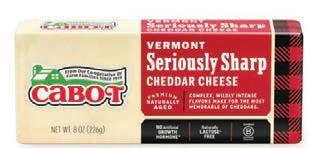











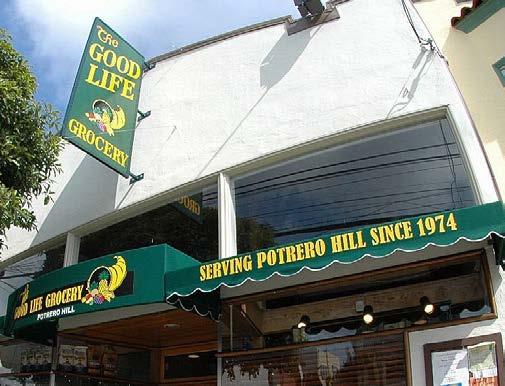
12 THE POTRERO VIEW June 2022 Sale Prices effective June 3-30, 2022 THANK YOU FOR SHOPPING AT THE GOOD LIFE Peaches, Plums and Melons Galore Summer Specials All Over Our Store Sunday June 19 Direct from the Field! Fresh Picked Corn! Non-GMO 99¢ /lb Whole Yellow, White, or Bi-Color Local! Happy Pride Month! MyMochi Ice Cream 6/1.5 oz -reg 7.79 $6.99 World Centric Compostable Containers reg 3.29-8.29 $2.79-$7.29 Evolution Fever Tree Tonic & Ginger Ale 16.9 oz -reg 3.29 2/$6 Greek Yogurt Ellenos 5.3 oz -reg 2.99 Organic Juices 15.2 oz reg 6.29 $3.49 12 ct -reg 6.99 Clover Organic Sour Cream 16 oz -reg 3.79 Tofutti Cuties 8/1.8 oz -reg 6.79 $5.49 Organic Large Eggs Clover On Sale! New & Delicious $4.69 $5.79 2/$5 Freedom... Pride... Choice Stay Strong... One Voice! Organic Watermelons Back To Nature Crackers 6-8.5 oz -reg 4.79 $4.29 Open Every Day! 8 AM to 8 PM - 1524 Twentieth Street - Potrero Hill - San Francisco - 415-282-9204




 BY VIVIEN WANG
BY VIVIEN WANG
















 BY LEE STUART
BY LEE STUART








































































